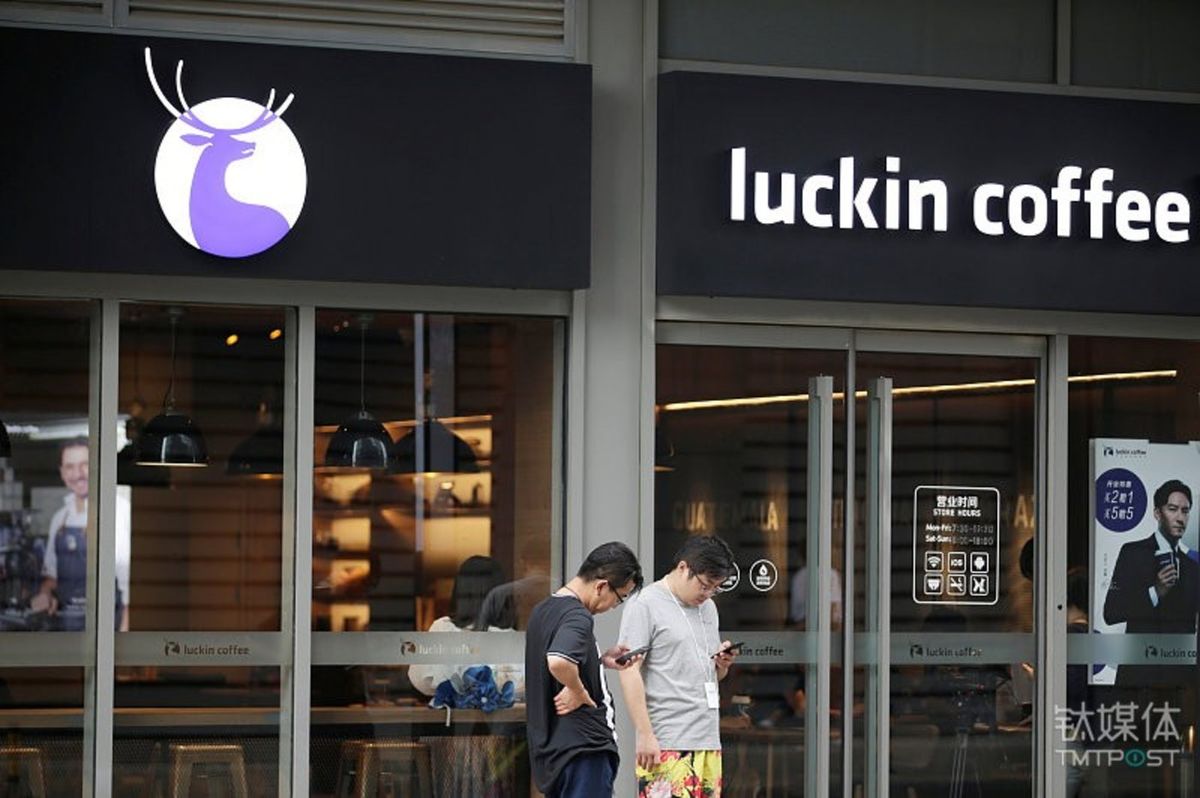The price of coffee in China

A few minutes every morning is all you need.
Stay up to date on the world's Headlines and Human Stories. It's fun, it's factual, it's fluff-free.
Chinese startup Luckin Coffee Inc. is going head-to-head with Starbucks for supremacy in mainland China.
Chinese President Xi Jinping recently received a gift from Howard Schultz, the former chief executive officer of Starbucks Corporation.
The coffee giant’s former boss sent the Asian giant’s current boss a translated copy of his most recent book, “From the Ground Up: A Journey to Reimagine the Promise of America.”
President Xi responded by sending Schultz a letter expressing his desire for increased cooperation between the United States and China. Schultz said it was a “great honor” to have received the reply.
Invasion of the baristas
Howard Schultz and the coffee chain he used to chair have grown familiar with China over the last two decades, as have many other coffee merchants. There has been and continues to be a rush by the coffee industry, particularly Starbucks, to expand into a massive Chinese market that has traditionally favored tea as its beverage of choice.
After opening its first store in China in 1999, China quickly grew to become Starbucks’ largest foreign market. The coffee monolith plans to increase the number of stores it operates in China – currently 4,700 in the mainland – to 6,000 in 2022.
Starbucks is not the only company rushing to cater to the Chinese market. Canadian company Tim Hortons Inc, Swiss conglomerate Nestlé S.A. and American chains such as McDonalds Corporation, KFC Corporation and 7-Eleven, Inc. have followed Starbucks in the hope of serving consumers who might be turned off by Starbucks’ higher prices.
Competition for dominance in the Chinese market may look increasingly congested, but coffee merchants have good reason to be optimistic.
A 2018 report found that the average person in China consumes around three cups per year. Compare that to the average person in the US – around 363 cups per year – and Japan – around 207 cups per person in 2014 – and it’s clear there is room for growth.
Hometown hero
The fiercest competition these foreign coffee merchants face isn’t each other but from inside China itself. Chinese startup Luckin Coffee Inc. is going head-to-head with Starbucks for supremacy in mainland China. While Luckin is officially a coffee chain, it closely resembles a tech company.
The company’s business model is centered around an app that allows customers to locate their nearest store and order their coffee in advance. Stores are generally small and require customers to order with the app. Customers often aren’t able to just walk in and order in person as they can at Starbucks. But, on the plus side, the Chinese coffee company delivers to customers and costs less than Starbucks.
Luckin’s business model appears to be working. The company was established in October 2017 and in 2019 the company was listed on the Nasdaq stock market and raised US$561 million in its initial public offering (IPO).
American business magazine Fast Company placed Luckin on its list of the most innovative companies and, in January 2020, Luckin surpassed Starbucks as the largest coffee chain in China. But 2020 proved to be a tumultuous year for the Chinese company – and not only because of the COVID-19 pandemic.
Hometown zero
In early 2020 Luckin found itself embroiled in a fraud scandal.
The Chinese company was accused of fabricating more than US$300 million in sales and was subject to quick retribution. After its stock prices tumbled, Luckin was delisted from Nasdaq and fined US$180 million, which it agreed to pay. Luckin’s CEO was fired and the Chinese Finance Ministry fined Luckin the equivalent of US$9.98 million.
While Luckin’s prospects have dimmed, it appears the company may have survived, though it’s operating from a weakened position in an increasingly competitive market.
Starbucks, meanwhile, has partnered with Chinese e-commerce giant Alibaba Group Holding Ltd. to help deliver Starbucks products in what appears to be an effort to negate one of the advantages Luckin offers its customers.
Coffee with Chinese characteristics
While Chinese cities are becoming battlefields for coffee consumption, some farmers in rural China are focusing on coffee production. As the global demand for coffee increases, the available land to grow coffee is decreasing because of climate change.
Farmers in traditional coffee growing nations such as Columbia are finding it difficult to adapt to the changing climate conditions, which is having a detrimental effect on coffee production.
Alternatives to traditional coffee-growing nations in Latin America are now being sought, with China’s Yunnan province stepping up to respond to the demand. As coffee consumption in China proliferates, Chinese coffee farmers are now developing higher quality coffee.
The coffee market in China is a microcosm of China’s role in the global market. Like many other industries, the liberalization of the Chinese market led to the entrance of a flood of international companies to meet the needs of a growing middle class.
But like many other industries, ranging from coffee to electric vehicles, as the Chinese economy has grown and the Chinese industry advanced, domestic competitors like Luckin have arrived to challenge the supremacy of traditional giants like Starbucks. While these Chinese companies are now challenging the Starbucks of the world in their home market, the battle just may spill over onto the global stage.
Have a tip or story? Get in touch with our reporters at tips@themilsource.com




Comments ()